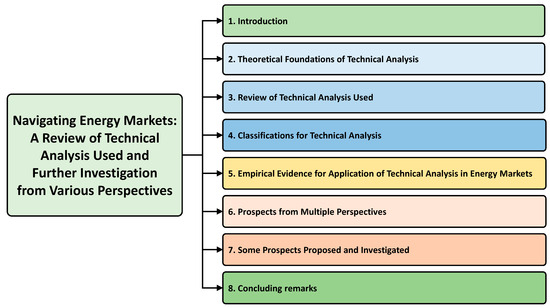Overview of Current Market Trends
As the world continues to evolve, so do the dynamics of financial markets. Analyzing current trends is essential for investors aiming to navigate these often turbulent seas. Several key factors shape the global economic landscape today, including macroeconomic indicators, technological innovations, and shifts in consumer behavior.
Global Economic Landscape
In recent years, the global economy has exhibited a blend of resilience and volatility. While some areas experience growth, others face challenges such as inflation and supply chain disruptions. Notable trends include:
- Inflationary Pressures: With rising prices affecting various sectors, central banks are adjusting monetary policies, causing fluctuations in interest rates.
- Global Trade Dynamics: Trade agreements and tariffs continue to impact international business, altering investment strategies for both corporations and individuals.
A common example is the effects of Federal Reserve policies on interest rates, significantly affecting spending and investment decisions.
Impact of Technological Advancements
Technology continues to revolutionize markets, creating numerous investment opportunities. The rise of fintech, e-commerce, and digital currencies highlights this shift.
- Increased Connectivity: Businesses now access global markets effortlessly, leading to innovative investment avenues, particularly in tech stocks.
- Automation and AI: These tools enhance productivity and precision in various sectors. For instance, AI-driven market analysis tools help investors make informed decisions.
Changing Consumer Behavior
Consumer preferences have transformed, largely due to technological advancements and cultural shifts. Several highlighted trends include:
- Sustainability: Investors are now eyeing eco-friendly companies that align with consumer values.
- Health and Wellness: The pandemic accelerated a focus on health-related products and services, presenting new investment opportunities.
In summary, by staying attuned to these market trends, investors can adapt their strategies and make informed decisions, ultimately leading to more sustained investment success.
Analysis of Investment Opportunities
With an understanding of the current market landscape, investors are presented with a variety of opportunities. From stocks to real estate and emerging sectors, assessing these options can position one for success in an evolving economic climate.
Stock Market Insights
The stock market remains a popular choice for many investors, but it’s essential to approach it with a clear strategy. Several insights can guide investment decisions:
- Growth vs. Value Stocks: There’s a growing trend towards growth stocks, particularly in technology and green energy sectors, as more investors seek long-term gains.
- Volatility: Recent economic changes can lead to market fluctuations. For example, last year, many tech stocks dipped due to rising interest rates, but savvy investors capitalized on those dips.
Understanding market cycles can enhance timing for buying or selling stocks, ultimately improving investment outcomes.
Real Estate Market Trends
Real estate offers unique investment opportunities, especially with seasonal trends and changing interest rates. Key considerations include:
- Geographical Variations: Cities with ongoing development or tech hubs like Austin or Denver are increasing in value.
- Interest Rates: Understanding mortgage interest rates is crucial, particularly how they influence buyer activity. For instance, a lower rate can significantly boost market demand.
Investors need to assess local market dynamics to make informed real estate decisions.
Emerging Industries to Watch
As technology and societal needs evolve, new industries are gaining traction. Some to watch include:
- Renewable Energy: With a push towards sustainability, companies in solar and wind energy are becoming increasingly lucrative.
- Health Technology: The pandemic accelerated the demand for telehealth services and wearable health devices, which continue to see growth.
By identifying and investing in these emerging sectors, investors can diversify their portfolios and position themselves to benefit from future trends.

Risk Assessment and Mitigation Strategies
As investors explore various opportunities, the importance of risk assessment cannot be overstated. With the changing market dynamics and economic uncertainties, implementing robust risk mitigation strategies is essential for preserving capital and achieving sustainable returns.
Diversification Techniques
Diversification is a cornerstone of effective investment strategy. The idea is simple: don’t put all your eggs in one basket. Here are some diversification techniques to consider:
- Asset Class Diversification: Invest in a mix of stocks, bonds, and real estate to reduce risk exposure. Each asset class often behaves differently under various market conditions.
- Geographic Diversification: Consider international markets alongside domestic investments. For instance, emerging markets can offer growth opportunities when domestic economies slow.
Using mutual funds or ETFs can also facilitate diversification efforts, allowing investors to spread risk without needing to select individual securities.
Hedging Against Market Volatility
Market volatility can be unsettling, but hedging strategies can mitigate risk. Popular methods include:
- Options Trading: Buying put options can protect against declines in stock prices, allowing investors to lock in selling prices.
- Inverse ETFs: These funds are designed to increase in value when the market declines, serving as a buffer during downturns.
Personal experience reveals that during downturns, strategic hedging can make a noticeable difference in overall portfolio performance, providing reassurance.
Evaluating Risk vs. Reward
Every investment carries inherent risks, but assessing potential rewards is equally crucial. To make informed decisions:
- Conduct a Risk Assessment: Analyze historical performance and volatility of potential investments.
- Set Clear Objectives: Define what you aim to achieve—higher returns often come with higher risks.
Keeping a balanced perspective on risk and reward can enable investors to make strategic choices that align with their financial goals, promoting greater long-term success.
Expert Opinions and Recommendations
Navigating the intricate world of investments can be daunting; however, insights from seasoned professionals can offer invaluable guidance. As investors gain a deeper understanding of risk mitigation strategies, it is equally important to leverage expert opinions and tools to enhance investment outcomes.
Insights from Financial Advisors
Financial advisors often emphasize the significance of a tailored investment approach. They usually suggest taking the time to assess personal financial situations and goals before diving in. Some key insights include:
- Comprehensive Planning: Advisors recommend creating a detailed financial map, including savings goals, retirement plans, and various financial needs.
- Continuous Review: Regular check-ins with your investment strategy are vital. Markets evolve, and so should your approach.
A financial advisor I spoke to recently highlighted the importance of adjustments based on market changes and personal life events—a suggestion I found particularly relevant.
Tips for Long-Term Investments
For those eyeing long-term growth, consider these practical tips:
- Stay Disciplined: Emotions can cloud judgment during market swings. A disciplined, long-term mindset usually pays off.
- Invest Consistently: Dollar-cost averaging, or investing a set amount regularly, can mitigate the impact of market volatility over time.
Successful investors often share stories of how sticking to a long-term plan helped them navigate challenging periods.
Market Forecasting Tools
Utilizing forecasting tools can also enhance decision-making. Some popular resources include:
- Technical Analysis Software: These tools help analyze market trends and predict price movements.
- Economic Indicators: Keeping an eye on inflation rates, unemployment figures, and GDP growth can provide insights into broader market trends.
Incorporating these tools into your investment strategy empowers you to make informed decisions. By combining expert advice with personal insights, investors can craft robust portfolios that withstand the test of time.

Navigating Market Uncertainties
As investors weave through various market opportunities, uncertainties caused by external factors can significantly influence outcomes. By understanding the impact of government policies, geopolitical events, and investor sentiment, one can better navigate these uncertainties with confidence.
Government Policies and Regulations
Government actions play a crucial role in shaping market conditions. Policies concerning taxation, trade, and monetary regulations can create ripples across various sectors. For example:
- Interest Rate Changes: The Federal Reserve’s decisions regarding interest rates directly affect borrowing costs, influencing consumer spending and corporate investment.
- Regulatory Changes: New regulations in sectors like technology and finance may create opportunities for compliance-driven companies while stifling growth for others.
An acquaintance of mine witnessed firsthand how changes in housing regulations impacted his real estate investments. Adjusting his strategy in response to these changes led to a more successful portfolio outcome.
Geopolitical Events Impacting Markets
Geopolitical events can also create uncertainty in the investment landscape. From trade wars to political instability, these circumstances can lead to significant market volatility. Key factors to consider include:
- International Relations: Strained relationships between countries may lead to tariffs and reduced trade, affecting global market dynamics.
- Conflict Zones: Political unrest can disrupt supply chains, causing ripple effects in industries reliant on global resources.
Staying informed about geopolitical developments enables investors to adopt proactive strategies.
Investor Sentiment and Market Psychology
Ultimately, markets are driven by human behavior. Understanding investor sentiment can help you anticipate trends and potential fluctuations. Some aspects to monitor include:
- Fear and Greed Index: This tool assesses market sentiment and can signal when the market is overheated or undervalued.
- Market Trends: Tracking prevailing trends can help you identify when to pivot your strategy.
In my own experience, taking cues from market psychology helped me avoid panic-selling during downturns, leading to more grounded decision-making. By embracing an informed, analytical approach, investors can better navigate the uncertainties of the market and capitalize on opportunities amidst challenges.

Case Studies: Successful Investment Stories
In the journey of investing, learning from the experiences of others can provide valuable insights. By examining successful investment stories alongside cautionary tales, one can gain a well-rounded perspective on crafting an effective strategy.
Learning from Market Legends
Market legends often serve as beacons of wisdom. Take Warren Buffett, for example. His value investing philosophy emphasizes:
- Long-Term Focus: Buffett famously invests in companies with strong fundamentals and holds them for years, allowing value to compound over time.
- Understanding Businesses: He emphasizes investing only in industries that one understands, which adds a layer of confidence in decision-making.
Inspired by Buffett’s approach, I once researched a local business with solid fundamentals but overlooked by many. By applying value investing principles, I reaped significant returns.
Adapting Strategies for Current Trends
The ability to adapt is vital in an ever-changing market landscape. One case to note is the rise of technology and healthcare stocks during the pandemic. Successful investors pivoted their strategies to include:
- Technology Investments: Zoom and Peloton became household names as remote work and fitness trends surged. Investors who identified these trends early saw substantial gains.
- Sustainable Investing: As environmental awareness grew, companies focusing on renewable energy attracted considerable interest, leading to profitable investments.
When I noticed the uptick in telehealth services, I realigned part of my portfolio, proving the value of agility in investment strategies.
Lessons from Market Failures
However, not all stories are tales of success. The dot-com bubble is a poignant example of how exuberance can lead to significant losses. Key lessons include:
- Overvaluation: Many companies with little to no profits were grossly overvalued, teaching investors to scrutinize financial metrics.
- Emotional Investing: The frenzy of rapid gains led many to make impulsive decisions, highlighting the risk of investing under emotional influences.
By acknowledging these failures and adjusting strategies accordingly, investors can better navigate potential pitfalls, using both success stories and cautionary tales to influence their investment journeys.
Building a Resilient Investment Portfolio
As investors reflect on the lessons learned from past experiences, the focus shifts toward constructing a resilient investment portfolio capable of weathering economic fluctuations. The key components of this process include effective asset allocation, thorough research, and diligent tracking of performance.
Asset Allocation Strategies
Asset allocation is fundamental to achieving a balanced portfolio. The main goal is to diversify across various asset classes to spread risk. Some effective strategies include:
- 60/40 Rule: This traditional approach involves allocating 60% to stocks and 40% to bonds. It balances growth potential and risk mitigation.
- Risk Tolerance Assessment: Adjusting allocations based on individual risk tolerance and investment horizon is essential. Younger investors might favor equities, while those nearing retirement may lean towards more stable bonds.
In my case, recalibrating my portfolio during market downturns has minimized losses and fostered recovery.
Importance of Research and Due Diligence
Research plays a critical role in informed investing. Conducting thorough due diligence helps investors identify potential risks and opportunities. Key research areas include:
- Company Fundamentals: Analyze metrics such as P/E ratios, earnings growth, and debt levels.
- Market Trends: Keep an eye on industry shifts and emerging technologies that could impact the performance of your investments.
When I started researching potential investments more rigorously, I noticed a significant improvement in my investment outcomes.
Tracking and Adjusting Investment Performance
An effective investment strategy isn’t static; it requires continuous monitoring and adjustment. To optimize performance:
- Regular Reviews: Evaluate your portfolio quarterly to identify underperformers and assess overall alignment with your goals.
- Performance Metrics: Use tools and software that provide insights into asset performance and market conditions.
Personally, I found that maintaining a disciplined approach helped me make timely adjustments, capitalizing on favorable market conditions and protecting against downturns. Building a resilient investment portfolio hinges on these principles, ensuring that investors are well-prepared to adapt to changing circumstances and sustain long-term success.





